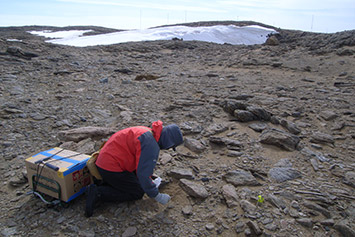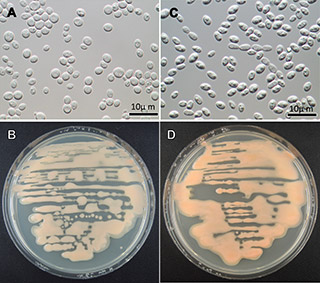National Institute of Polar Research
Two New Species of Fungus Discovered for the First Time in the History of the Japanese Antarctic Research Expedition
Released on December 16, 2016 (in Japanese)
Posted on March 31, 2017
National Institute of Polar Research
Dr. Masaharu Tsuji and his colleagues at the National Institute of Polar Research have discovered two new species of fungi in their investigation of fungal diversity on East Ongul Island, where Syowa Station is located. These fungal species are considered to be adapted to the cold and oligotrophic Antarctic environment, as they can grow at sub-zero temperatures and without needing any amino acids or vitamins. This is the first report of new fungal species isolated from East Ongul Island in the 60 years history of Japanese Antarctic Research Expedition.
About 100,000 species of fungus have been reported in the world, meaning that they are a large diverse group of organisms. As fungi are decomposers of organic compounds, they are involved in carbon cycling and soil formation of their habitats. Fungi are also thought to play a important role in biomass production through their involvement in the colonization by photosynthetic organisms such as lichen in oligotrophic environments such as the Antarctic. However, only about 1,000 species of fungi have been reported in the Antarctic region so far. This number is reduced to only approximately 30 species if the range is narrowed to the area around Syowa Station. For this reason, the research team carried out a large-scale investigation of fungi on East Ongul Island, where Syowa Station is located.

Figure 1:Sample collection on East Ongul Island (courtesy of Megumu Tsujimoto)
In November 2015, Dr. Tsuji studied frozen samples taken from 226 sites on East Ongul Island. The samples had been collected by members of the research team Professor Satoshi Imura and Dr. Megumu Tsujimoto during the 49th Japanese Antarctic Research Expedition (2007–08).
From the 226 samples, 293 fungal strains were isolated. Their 26S ribosomal DNA and others sequences were analyzed, and consequently, two new basidiomycetous yeast species (Fig. 2) were identified. It is the first time in the history of the Japanese Antarctic Research Expedition that a new species of fungus has been discovered. The new species have been named Cystobasidium tubakii and C. ongulense, after the late Professor Keisuke Tubaki, who was the first to report fungi from near the Syowa Station, and East Ongul Island.

Figure 2: Cystobasidium tubakii (A and B) and C. ongulense (C and D). A: micrograph of C. tubakii; B: colonies of C. tubakii after 10 days of culture on a YM agar plate at 15℃; C: micrograph of C. ongulense; D: colonies of C. ongulense after 10 days of culture on a YM agar plate at 15℃.
Detailed examination of growth characteristics of these two new species revealed that both can grow at -3°C. These species were also found to need neither amino acids nor vitamins for their growth, while other fungi of the genus Cystobasidium need vitamins to grow. These characteristics were likely obtained by the yeasts to survive oligotrophic environments such as that in Antarctica.
Dr. Tsuji explained the importance of this discovery. “We will investigate if these fungi can be utilized in industry by making the most of their characteristics. Our final purpose is to provide an overview of the terrestrial ecosystem in this region through next-generation sequencing of fungi, bacteria, and animalcules contained in previously collected samples.”
Published Paper
Journal: Mycoscience
Title: Cystobasidium tubakii and Cystobasidium ongulense, new basidiomycetous yeast species isolated from East Ongul Island, East Antarctica
Authors:
Masaharu Tsuji1, Megumu Tsujimoto1,2, Satoshi Imura1,2
1 National Institute of Polar Research, Japan
2 Department of Polar Science, SOKENDAI, Japan
Available online: December 10, 2016
URL: http://www.sciencedirect.com/science/article/pii/S1340354016300845
DOI: 10.1016/j.myc.2016.11.002
Funder
This study was supported by JSPS Grant-in-Aid for Scientific Research (18310024, 16K12643, 16H06211).
Contact
Public Relations Section
E-mail: kofositu@nipr.ac.jp








